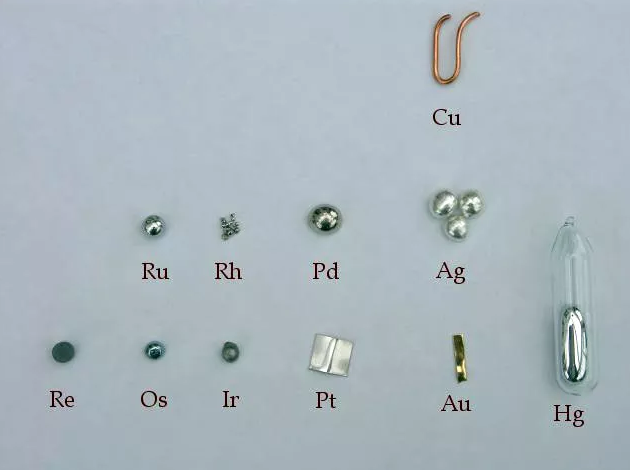
This above chart shows the noble metals and precious metals.
Characteristics of Noble Metals
The noble metals typically resist corrosion and oxidation in humid air. Usually noble metals are said to include ruthenium, rhodium, palladium, silver, osmium, iridium, platinum and gold. Some texts list gold, silver and copper as the noble metals, excluding all others. Copper is a noble metal according to the physics definition of noble metals, although it corrodes and oxidizes in moist air, so is not very noble from a chemical standpoint. Sometimes mercury is called a noble metal.
Characteristics of Precious Metals
Many of the noble metals are precious metals, which are naturally-occurring elemental metals that have a high economic value. Precious metals were used as currency in the past, but now are more of an investment. Platinum, silver and gold are precious metals. Other platinum group metals, less used for coinage but often found in jewelry, also may be considered precious metals. These metals are ruthenium, rhodium, palladium, osmium and iridium.